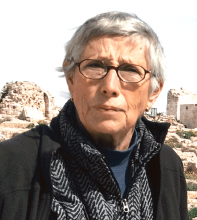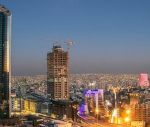“The US must reconsider its failed Syrian policy,” The Washington Post editorialised this week.
Indeed.
The Post, however, urged a more proactive policy, implying that air strikes on Syrian targets would be the right way to go.
In September, US President Barack Obama did not carry out his threat to take such action after Damascus agreed to destroy its chemical weapons.
Air strikes will not end the conflict in Syria. Obama did not bomb because he knew very well that once the first bombs fell, the situation could spin out of control.
Furthermore, the chief element in US policy, arming “moderates”, will not win the war against the regime or turn the tide of extremism in Syria, which, according to US intelligence chief James Clapper, has become the regional equivalent of Pakistani tribal areas, the main base of Al Qaeda.
He cited Al Qaeda’s official Syrian faction, Jabhat Al Nusra, as a clear and present danger to the US.
Among the 1,600 anti-government militias comprising 75,000-110,000 fighters, there are 26,000 radicals. And among the radicals are 7,000 foreign fighters from 50 countries. Up to 350 Britons and 200 Australians are said to be among the Westerners, while 4,500 hail from the region’s Sunni states. All could do serious damage when they return to their home countries.
The majority of the militias are disparate, small, local groups that have associated themselves with larger, well-funded and well-armed formations.
Most of these are fundamentalist dedicated to transforming Syria into an “Islamic state”, as defined by their clerics and commanders.
The most powerful formation, at present, is the Islamic Front, composed of Ahrar Al Sham, Liwa Al Tawhid (Aleppo’s main insurgent force), Liwa Al Haqq, Suqour Al Sham, Jaish Al Islam, Ansar Al Sham and the small Kurdish Islamic Front.
The Arab groups had previously belonged to the Syrian Islamic Front and Syrian Islamic Liberation Front.
Liwa Al Tawhid had cooperated with the “moderate” rebel Free Syrian Army but has renounced its ties to this loosely linked collection of militias. Other groups have followed suit, relegating the FSA units to the sidelines of the struggle.
Indeed, the FSA holds only three small Shiite villages in the north, while large areas in Idlib, Aleppo and Deir Al Zor provinces are under the control of Al Qaeda-linked Islamic State of Iraq and the Levant and Jabhat Al Nusra and homegrown fundamentalist brigades.
US Secretary of State John Kerry said, time and again, that the international community’s goal in Syria is the creation of a democratic regime that maintains the country’s territorial integrity and sovereignty, and respects the religious and civil rights of all the country’s diverse communities.
This goal will not be realised if Damascus falls to either the radicals or the only slightly less radical homegrown fundamentalists who now dominate the insurgency.
Therefore, Kerry must plan for and act upon the political rather than the military option.
The Geneva talks provide the only means to end the conflict and preserve Syria.
While the talks provide a forum for dialogue between the government and opposition, the main steps forward are certain to be agreed in backrooms during meetings between, on the one hand, Western, Russian, Turkish and Arab teams, and, on the other, Syrian officials, security figures and military commanders.
The most urgent order of business is to halt the fighting by imposing ceasefires that ensure the status quo on the ground. Neither side will agree to stop shooting unless it feels it will not lose by doing so.
The good news is that there have been some local ceasefires that can be built on. The latest was in Barzeh, a large area northeast of Damascus, where insurgents have been well dug in for more than two years.
Pressure will have to be exerted on those providing weapons to both sides, to halt deliveries for limited periods to encourage soldiers and insurgents to cease fire before they run out of ammunition.
This goes for private suppliers of Al Qaeda-linked radicals as well as for other anti-government elements.
The next step is to secure access to food and medical supplies set to be delivered by neutral organisations to areas under siege, making certain, as much as possible, that provisions meant for civilians are not seized by fighters.
Women, children and ailing people who wish to leave must also be evacuated.
While it was agreed in Geneva that the old city of Homs should be first on the list of locations to receive aid and to evacuate civilians who seek to leave, this has not worked due to the reluctance of both parties on the ground to carry out the scheme.
However, this past week, large amounts of food and medical aid were delivered by the UN Relief and Works Agency (UNRWA) and the Syrian Arab Red Crescent to the Palestinian refugee camp in the district of Yarmouk, south of Damascus, and several civilians were allowed to leave.
The Yarmouk example could become the model — rather than Homs — for similar operations.
Unfortunately, most observers complain about the Homs failure rather than applaud the Yarmouk success, although the number of people helped in Yarmouk, some 18,000, is far larger than the 2,500 in the old city of Homs.
The basis for the current negotiations, the declaration issued by the Geneva meeting of June 30, 2012, “Geneva I”, calls for the establishment by mutual consent of a transitional governing authority that will assume all executive powers. On this issue, the two sides remain, in declaratory policy, far apart.
While the government delegation has given priority to ending fighting and imposing security, the opposition expatriate National Coalition team wants this to be the first issue to be resolved and insists that President Bashar Assad cannot play a role in the transition. His exclusion is a “red line” for the government.
However, during the first round in Geneva this time (Geneva II) there was some common ground even on this issue.
Syrian Foreign Minister Walid Mouallem said the government and opposition could form a “national unity government”. This amounts to a concession that should be built on.
Since Assad’s current term only has a few months to run, he might also be pressed not to run again and a figure acceptable to both sides could be chosen to assume the presidency.
Vice President Farouk Al Sharaa was suggested by domestic opposition groups more than two years ago. He may not, however, be acceptable to either side today.
Mouallem also proposed the expansion of the opposition delegation to include domestic factions that are meant to meet with the coalition in Cairo this week to see if this can be arranged.
So far, the National Coordination Board, headed by Hassan Abdel Azim, and the Kurdish Democratic Union, which refused to go to the first round of talks, seem to be ready to discuss participating in the second.
There are other factions in Syria and abroad that could extend the reach of the opposition delegation and provide both legitimacy and credibility.
Finally, the coalition has said that once a transitional authority is in place, the FSA could join forces with the regular army to take on radical fundamentalists connected to Al Qaeda.
This is a positive stance although it is all too clear that the secular forces will, ultimately, have to take on the non-Al Qaeda fundamentalists as well if Syria is to remain a country for all its communities.













